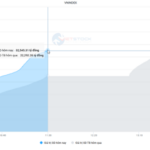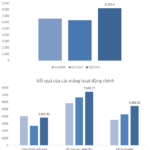The Lao Cai – Hanoi – Haiphong – Quang Ninh railway line originates at Lao Cai Station (from the point of rail connection with China) and terminates at Ha Long Station (belonging to the Kep – Ha Long railway line). The total length of the line is approximately 427km, including 41 stations along the route.
The line traverses 10 provinces and cities, namely Lao Cai, Yen Bai, Phu Tho, Vinh Phuc, Hanoi, Bac Ninh, Hung Yen, Hai Duong, Hai Phong, and Quang Ninh. The consulting consortium, TRICC – TEDI, divided the Lao Cai – Hanoi – Haiphong – Quang Ninh railway line into two main lines and two branches.
The first main line stretches from Lao Cai to South Haiphong and Lach Huyen Port, spanning over 391 km. The second main line, from South Haiphong to Cai Lan, measures 50.5 km in length. Meanwhile, the first branch line connects South Haiphong to Nam Do Son Port, covering 12.6 km, while the second branch, from Nam Dinh Vu to Dinh Vu, is 7.4 km long.
According to the Vietnam Railway Authority, the entire route will feature 56 large bridges with a total length of 47.5 km, crossing rivers such as the Red River, Lo River, and Bach Dang River. It will also cross expressways, including Hanoi – Lao Cai, Hanoi – Haiphong, and Haiphong – Quang Ninh, as well as national and provincial highways. Additionally, there will be 11 tunnels constructed along the line.
Along the line, 10 stations will serve both passengers and cargo, including Yen Bai, Phu Tho, Viet Tri, Vinh Phuc, Vinh Yen, Tam Hop, Bach Hong, Dong Anh, Lac Dao, and Hai Duong. The remaining stations will be dedicated to either cargo or passenger trains. Five stations are planned at the seaports of Lach Huyen, Nam Do Son, Nam Dinh Vu, and Dinh Vu.

The estimated total investment requirement for the Lao Cai – Hanoi – Haiphong – Quang Ninh railway line exceeds VND 179,000 billion.
The estimated total investment requirement for the railway line is over VND 179,000 billion, including VND 23,448 billion for land clearance costs and VND 107,260 billion for construction and equipment expenses. The remaining funds are allocated for consulting, project management, and contingency costs.
According to the consulting consortium TRICC – TEDI’s calculations, the transport demand for the Lao Cai – Hanoi – Haiphong – Quang Ninh railway network is projected to reach 12.7 million tons of cargo and 4.6 million passengers by 2030. By 2040, the demand is estimated to increase to 14.9 million tons of cargo and 6.2 million passengers, and by 2050, it is expected to reach 17.4 million tons of cargo and 8.3 million passengers.
The primary objective of the railway line’s planning is to enhance the transport capacity of the Lao Cai – Hanoi – Haiphong – Quang Ninh route to meet the growing demand for rail transport and ensure the efficient utilization of the line. It aims to connect the national railway network with seaports, industrial zones, and tourist destinations, maximizing the effectiveness of rail transport and contributing to the industrialization and modernization of the country.
This line also serves as a critical link connecting major economic zones, industrial parks, and seaports, aligning with Vietnam’s strategy of “Two Corridors and One Belt” (the economic corridor of Kunming – Lao Cai – Hanoi – Haiphong – Quang Ninh and Nanning – Lang Son – Hanoi – Haiphong – Quang Ninh) within the framework of the China-ASEAN Free Trade Agreement.
Regarding the project timeline, the consultants recommended that the Lao Cai – Hanoi – Haiphong section be prioritized for investment and construction by 2030. The Haiphong – Quang Ninh section will be studied for implementation after 2030, in conjunction with the investment schedule of the coastal railway line from Nam Dinh to Thai Binh, Haiphong, and Quang Ninh.
“High-Speed Rail Project: Presenting the Vision for a 350km/h North-South Corridor in Vietnam”
The Vietnam Railways Authority has confirmed that the Ministry of Transport has submitted a proposal for a high-speed North-South railway to the Government Party Committee for approval by the Politburo. The Ministry is expediting the completion of the project’s pre-feasibility study report, aiming to present it to the National Assembly for their consideration and investment decision during their upcoming October session.











































